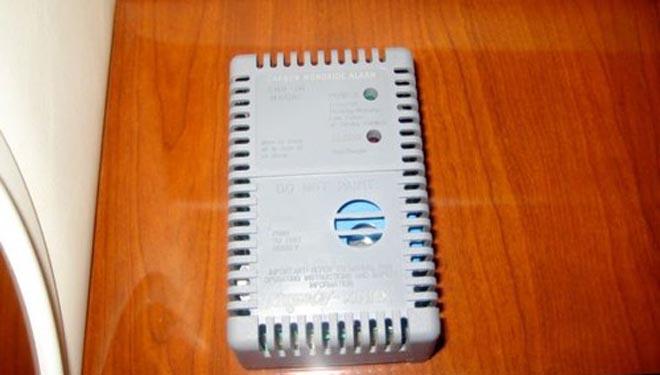Carbon monoxide poisoning - is it possible on YOUR boat?
by RYA/Sail-World Cruising on 28 Mar 2014

Carbon monoxide alert. Is it installed correctly? Is it actually working SW
In 2013, a mother and her 10 year old daughter died as a result of carbon monoxide poisoning in a cabin cruiser. More recently two fishermen, who were found dead on their boat, are believed to have died from carbon monoxide poisoning because the boat’s cooker was left on for heat on a cold night. Sailors should make themselves aware of what equipment on your boat gives off carbon monoxide
Carbon monoxide is a highly poisonous gas that has no colour, taste or smell. It can be produced by anything that burns gas, wood, oil or coal. Poisoning by Carbon Monoxide can be fatal or cause lasting health damage.
The Message is simple: Fit an Alarm, Do not block ventilation, know the signs, service appliances
Fitting an alarm
Carbon monoxide is impossible to detect without an alarm. ‘Black Spot’ indicators are not as accurate and will not alert or wake you if there is carbon monoxide present.
When buying a carbon monoxide alarm, make sure it meets current safety standards in your location.
Unblock Ventilation
Boats have to be built with adequate ventilation for open flame appliances such as LPG cookers. It is dangerous to block ventilation for these appliances. If you block ventilation it can lead to carbon monoxide poisoning. Appliances need a consistent supply of air in order for complete combustion to happen and for the appliance to work correctly. Small generators also pose a threat. If you have an emergency generator working on board for any reason, make sure the exhaust is aimed over the side of the boat and not into the cabin.
Know the signs
The six main symptoms of carbon monoxide poisoning are headaches, dizziness, nausea, breathlessness, collapse and loss of consciousness which may well lead to death. Many of the symptoms of carbon monoxide are similar to those of flu, food poisoning, viral infections, or simple tiredness.
Danger signs to look out for around gas and other fuel-burning appliances include:
• Soot or yellow/brown staining on or around your appliance
• Excessive condensation in the room where the appliance is installed
• Lazy yellow / orange coloured gas flame rather than a sharp blue one
• Pilot lights that frequently blow out
Service appliance
For protection from carbon monoxide poisoning, it is strongly recommended that you have all fuel-burning appliances – including stoves, fires and heaters – serviced at the recommended interval by a qualified and registered engineer.
Sail-World Cruising wishes to thank the Royal Yachting Association and the Carbon Monoxide – Be Alarmed! Campaign for much of the information provided in this article. Carbon Monoxide – The campaign is run by Energy UK on behalf of British Gas, EDF Energy, E.ON, npower, Scottish Power and SSE, in partnership with the Dominic Rodgers Trust and is the British campaign to reduce the number of deaths and injuries caused by Carbon Monoxide.
If you want to link to this article then please use this URL: www.sail-world.com/120492